AQLI Top Charts 2024
Our latest report from the Air Quality Life Index (AQLI) reveals the immense toll air pollution can have on life expectancy. Follow along as we roll out ten easy-to-digest charts that uncover the most compelling findings. These findings show the severity of the problem, but also the benefits strong policies could bring to improve our health and lengthen our lives.
#1 - Pollution is highly unequal around the world, and so are policy ambitions
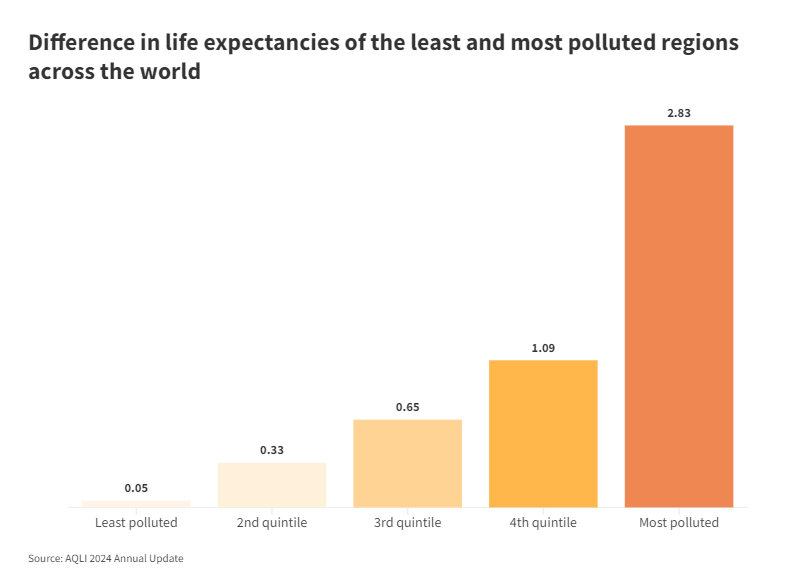
Whether pollution is increasing or decreasing, it’s clear that some regions of the world are much more polluted than other regions. People living in the most polluted places (the top quintile) breathe air that is six times more polluted than the air breathed by those living in the least polluted places (bottom quintile). That means that pollution in the most polluted places is cutting 2.7 more years off the lives of those living in them compared to those in the cleanest places.
#2 - The Global Decline in Pollution in Recent Years is No Longer Entirely Due to China
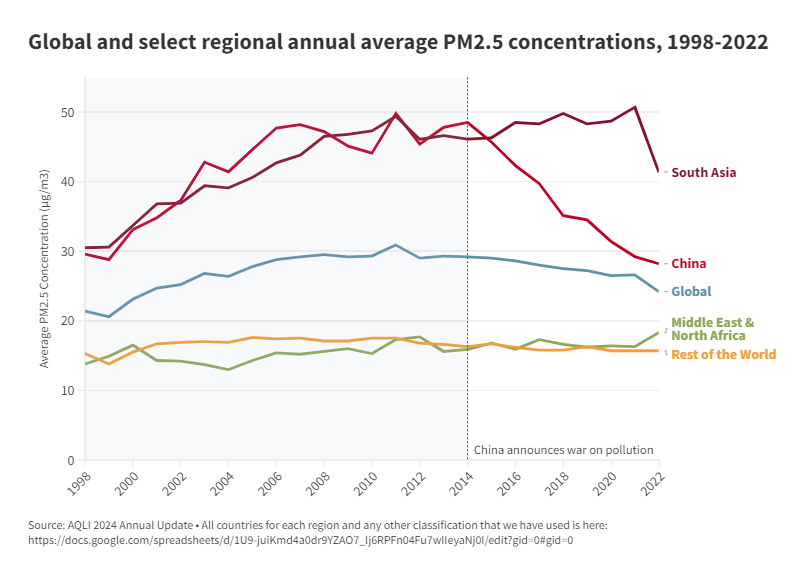
Over the past two decades, particulate pollution (PM2.5) levels have remained fairly constant for most of the world. However, since 2013, air pollution’s course has been made up of two competing regional trends. China has had staggering success in combating pollution since declaring a “war on pollution” in 2014, reducing its pollution by 39 percent from 2013 to 2021—a drop that pushed average global pollution into a decline. Meanwhile, the South Asian countries of India, Bangladesh, Nepal and Pakistan saw their pollution increase by almost 10 percent from 2013 to 2021.
#3 - Consistent Wildfire Smoke’s Heavy Toll: California is Home to 9 of the Top 10 Most Polluted Counties
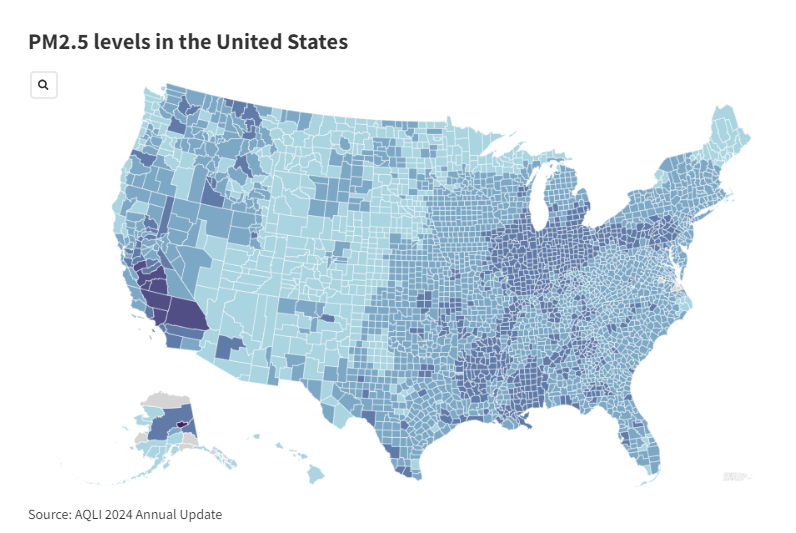
As record wildfires raged in areas around the world this summer—from Greece to Canada to Indonesia—California’s consistent exposure to wildfire smoke is proving its deadly toll. AQLI’s most recent report shows that out of the top 10 most polluted U.S. counties, 9 of them were in California in 2022.
#4 - While Particulate Pollution is the Greatest External Risk to Human Health Globally, Funding to Confront it Remains Largely Unbalanced
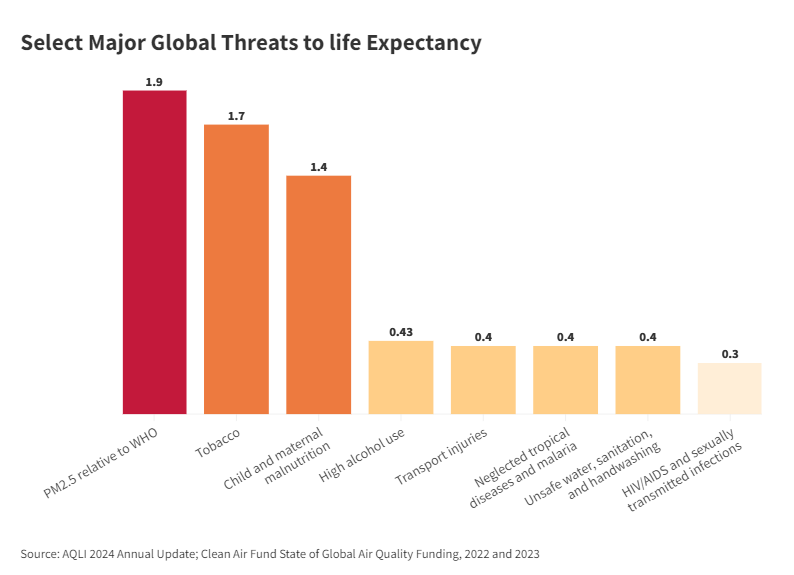
Measured in terms of life expectancy, the AQLI reveals that ambient particulate pollution (PM2.5) is consistently the world’s greatest external risk to human health. While particulate pollution is set to reduce global average life expectancy by 1.9 years, smoking, for instance, reduces global life expectancy by about 1.7 years. Child and maternal malnutrition reduces life expectancy by about 1.4 years; alcohol use by 5 months; transportation injuries from vehicle accidents and unsafe water, sanitation and handwashing, 4.8 months; and HIV/AIDS, 3.4 months.. Thus, the impact of particulate pollution on life expectancy is comparable to that of tobacco use, 1.3 times that of childhood and maternal malnutrition, 4.4 times that of high alcohol use, 5.8 times that of transport injuries like car crashes and unsafe water, and 6.7 times that of HIV/AIDS, 4.4 times that of alcohol use, 5.8 times that of transport injuries from vehicle accidents or unsafe water, sanitation and handwashing, 6.7 times that of HIV/AIDS, and 26.7 times that of nutritional deficiencies.
#5 - As the EU Tightens its Pollution Standard, Most Eastern European Countries Won’t be Complying, Cutting Their Lives Shorter than their Western Neighbors
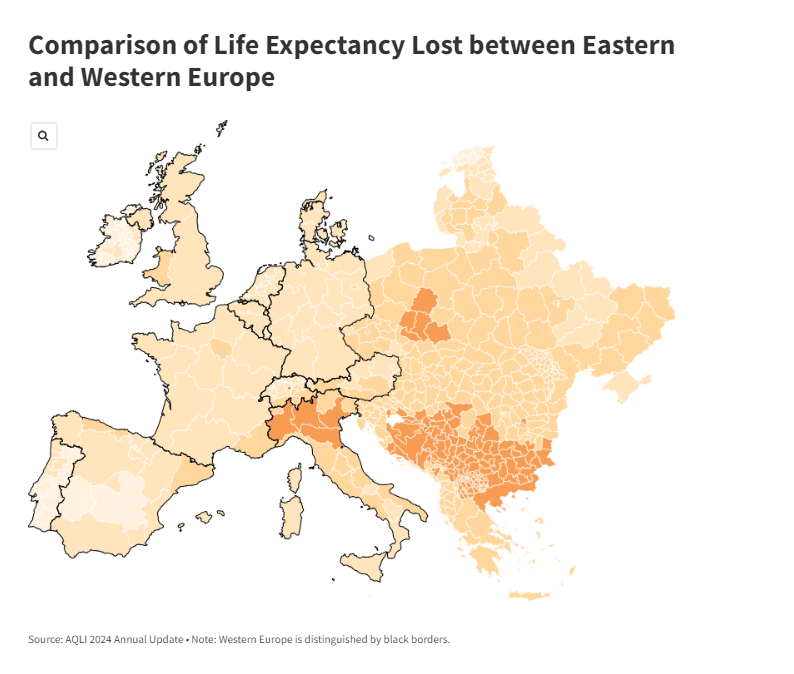
Despite improvements in air quality over the last two decades, Europeans today are breathing starkly different air. The western portion of the continent experiences generally cleaner air compared to the eastern part, where virtually all of the populations of Poland, Belarus, Slovakia, Hungary, Lithuania, Armenia, and Bosnia and Herzegovina do not meet the World Health Organization’s (WHO) guideline for particulate pollution (PM2.5). If particulate pollution was reduced to meet the WHO guideline, 61.3 million total years of life expectancy would be gained.